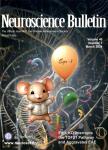Loss of C9orf72 in Microglia Drives Neuronal Injury by Enhancing Synaptic Pruning in Aged and Alzheimer’s Disease Mice
作者机构:School of PharmacyHangzhou Normal UniversityHangzhou311121China Key Laboratory of Elemene Class Anti-Cancer Chinese MedicinesEngineering Laboratory of Development and Application of Traditional Chinese MedicinesCollaborative Innovation Center of Traditional Chinese Medicines of Zhejiang ProvinceHangzhou Normal UniversityHangzhou311121China
出 版 物:《Neuroscience Bulletin》 (神经科学通报(英文版))
年 卷 期:2022年第38卷第3期
页 面:327-330页
核心收录:
学科分类:0710[理学-生物学] 1002[医学-临床医学] 1001[医学-基础医学(可授医学、理学学位)] 100203[医学-老年医学] 10[医学]
基 金:the National Natural Science Foundation of China(92049104 and 82103210) the Research Start-up Project by Hangzhou Normal University(4125C5021920453 and 4125C50220204106)
主 题:C9orf72 Alzheimer diseases
摘 要:Many diseases are caused by the expansion of simple sequence repeats scattered throughout the human genome;they are defined as repeat expansion *** size of the repeat unit ranges from trinucleotides(the vast majority)to tetranucleotides,pentanucleotides,hexan cleotides,and even dodecanucleotides[1].Expansions of the hexanucleotide GGGGCC in the C9orf72 gene are the most frequent genetic cause of amyotrophic lateral sclero・sis(ALS)and frontotemporal dementia(FTD)[2].In addition to ALS and FTD,C9orf72 repeat expansions may also be associated with Alzheimer s disease(AD),since the rate of such expansions in AD cases(0.57%)is higher than normal(0.11%)[3].However,the exact role of C9orf72 in AD is still unclear.



